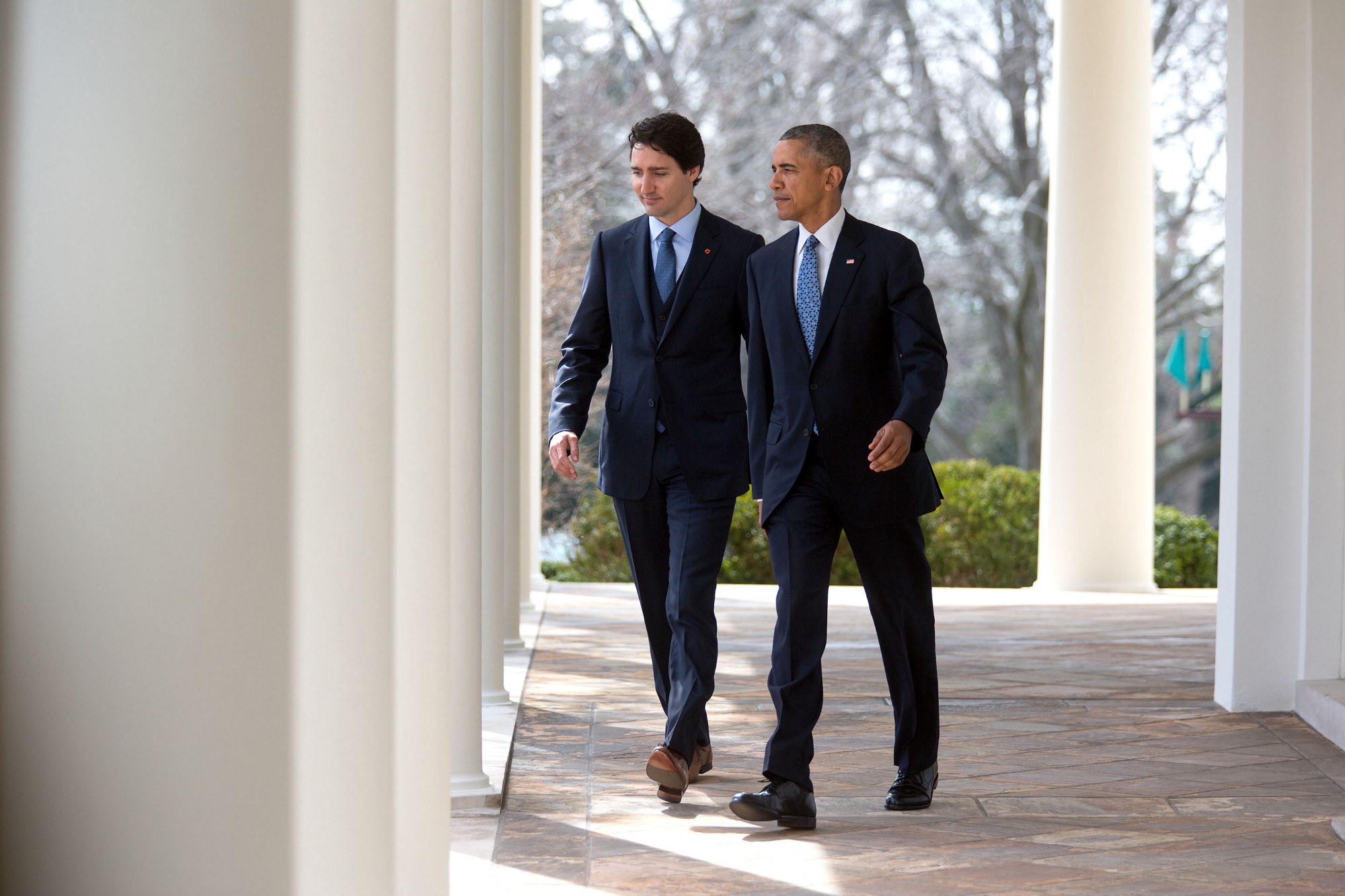Two powerful new allies join WWF for a thriving Arctic
The Arctic is 40 per cent of Canada’s landmass, two-thirds of our coastline and a large part of our national identity. But it’s not ours alone. We share it with the United States and six other nations, so it’s vital that our efforts to balance environmental sustainability with community benefits be shared too.
That’s what makes Prime Minister Justin Trudeau’s recent visit to Washington so important to the Arctic, and to our work at WWF-Canada.

Canada and the United States together hold more Arctic territory than any single country. After meeting last week, Trudeau and U.S. President Barack Obama unveiled these groundbreaking agreements on how they want to see the region sustainably managed. And the agreements align with what WWF-Canada is working toward in the Arctic.
Here’s what Canada and the United States want to do, and what WWF-Canada is doing to demonstrate how to make their ambitions possible.
Canada and the United States want to protect at least 17 per cent of land areas and 10 per cent of marine areas by 2020.
WWF-Canada has identified the most critical land and marine areas in need of protection, and is working to secure the necessary safeguards.
Canada and the Unites States want to establish this year a new, ambitious conservation goal for the Arctic based on the best available climate science and knowledge, Indigenous and non-Indigenous alike.
WWF-Canada’s work is guided by the best available science and traditional knowledge gathered from Inuit voices in the Arctic. We are assisting, for example, the community of Chesterfield Inlet, on Nunavut’s western Hudson Bay coast, voice their concerns about shipping to the Nunavut Planning Commission.
Canada and the United States want to create low-impact shipping corridors.
WWF-Canada’s has been developing lower-impact shipping practices in the Arctic. We’re working with mariners to implement Arctic shipping best-practices and creating models to better understand the impact should a marine shipping disaster occur.
Canada and the United States want abundant Arctic fish and science-based, sustainable commercial fishing.
WWF-Canada will support the creation of at least three small-scale, community-based, sustainable Arctic inshore fisheries over the next 4.5 years to enable community development.
Canada and the Unites States are committed to science-based approaches to oil and gas.
WWF-Canada is studying the use of dispersants as a safe means of stopping oil spills from harming wildlife or habitats. Preliminary results indicate that with dispersants, the solution risks being worse than the problem.
Canada and the United States want renewable-energy alternatives to the common practice of powering Arctic communities with diesel electric generators.
WWF-Canada is working to complete at least three community-scale Arctic renewable energy projects to demonstrate that it is possible to economically reduce dependence on fossil-fuel electric generators in these and the other 250 communities in Canada that currently do so.
Canada and the United States want to address the risks posed by heavy fuel oil use and black carbon emissions from Arctic shipping.
WWF-Canada recently conducted a ship-fuel study that established viable alternatives to heavy fuel oil, and I’ll be at the Arctic Shipping Summit next week to show Arctic shippers how to implement these changes, and why they should.
The Canadian Arctic is a special place for conservation. Where else in the world do we have the opportunity to safeguard a place that is still, in many ways, pristine, with people and species living in ecosystems that have only been lightly altered by human activities.
Here, we have a chance to learn from past experiences in other places and get things right, with smart long-term planning based on scientific and traditional knowledge.
And I’m more optimistic than ever that we can succeed now that the governments of Canada and the United States share so many of WWF-Canada’s aims.
